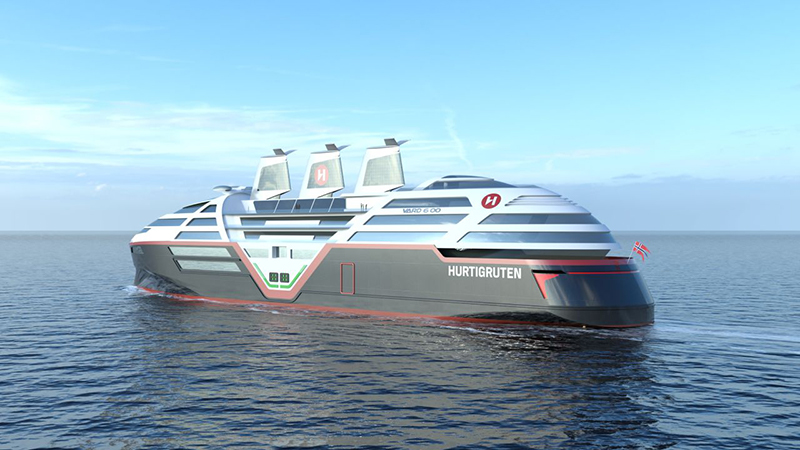Volcanoes are erupting in The Philippines, but on-fire Australia received some welcome rain. The Iran war cries have been called off and The Donald’s military powers are about to be hamstrung by the Senate. Meanwhile, his impeachment trial is starting, and we’re all on Twitter for a front-row seat.
What Could Go Right? The IRA turns one
The Inflation Reduction Act has hastened the US’ clean energy transition.
This is our weekly newsletter, What Could Go Right? Sign up here to receive it in your inbox every Thursday at 5am ET. You can read past issues here.
The IRA turns one
A happy belated birthday to the Inflation Reduction Act (IRA), which was signed a year ago on August 16. Despite the name, the law is lauded by climate advocates chiefly for directing large amounts of money toward the green energy transition.
One year in, let’s go over what the law is, some of its lesser-known inclusions, and what has happened since its passage.
What does the IRA do? In a bid to spur the clean energy transition and cut down on greenhouse gas emissions, the IRA provides tax incentives, grants, and loan guarantees to companies investing in clean energy projects.
It also provides tax breaks and rebates to consumers (you!) for clean energy upgrades such as solar panel installation, insulation and window replacement, heat pumps, and even electric appliances. For details on when these offers will be available and how to take advantage of them, the independent publication Heatmap has an excellent guide here.
Is it working? So far, 272 new clean energy projects have been announced, totaling $278 billion in investment from private companies, according to a report by the climate communications organization Climate Power. These projects will be eligible for tax credits that can apply to both one-time, upfront investment costs as well as ongoing production costs.
What are the projects? Mostly battery, electric vehicle, and wind and solar manufacturing.
Where are they? Across the country in 44 different states. The top three states with the most projects are Michigan with 24; Georgia with 22; and South Carolina with 20. Over half of the projects, 152 of them, are located in Republican-held districts.
Climate Power’s report has a state-by-state breakdown, if you’re interested in looking up your own state. And the map below, from the climate nonprofit Rocky Mountain Institute, is interactive—showing you the type, size, company name, and exact location of each project—if you click through.

How expensive will this be? Because private sector interest has been so high, the cost may be more than double what was estimated before the law was passed. New research from the Brookings Institute and Goldman Sachs estimate the federal government spend will exceed $1 trillion. Just under a third of it, however, is expected to be offset by money-raising provisions also passed in the IRA, such as increasing the minimum tax on large corporations to 15 percent and boosting tax collection. We will have to wait and see how the math works out on this one.
What will the IRA’s emissions impact be? Estimates vary. A new paper outlined in Carbon Brief found that the IRA will hasten progress toward the US’ 2030 climate target of bringing emissions to 50–52 percent below 2005 levels, when emissions peaked. Without the IRA, the authors calculate, the US would be on track for a 25–31 percent reduction (the yellow lines in the graph below, with the red as the average). With the IRA, that increases to 33–40 percent (the light blue lines below, with the dark blue as the average).

Another analysis from the research firm Rhodium Group found that with the IRA, emissions will decline between 29–42 percent. Again, we’ll have better numbers the more time passes.
What is the state of US’ emissions in general? Depending on which data source you look at, US emissions peaked either in 2005 or 2007, at over 6.5 billion tonnes. Since then, we have come down to about 5.5 billion. The “best case scenario” estimate of the IRA’s impact brings us to around 3.7 billion by 2030.
Is there any other benefit to me? Probably. The same Carbon Brief paper referenced earlier estimates a $13–190 savings on annual energy spend per household by 2030. (I can’t say those numbers thrill me, however, even on the high end.) For those in the clean energy industry, over 170,000 new jobs for electricians, mechanics, construction workers, and more have been created since last year. The IRA also promises to lower costs for those on Medicare. As we continue the green transition, climate advocates say that we’ll also see lower numbers of health issues caused by pollutants.
Further reading: The management consulting firm McKinsey & Company has a comprehensive breakdown of everything the IRA covers here.
Do you have any other questions about the IRA? Feel free to write in to hello@theprogressnetwork.org or leave a comment below.
Quick hits
- This is so neat. A startup in England is using excess heat from cloud computing to provide free hot water. A network hooks up computers to boilers in people’s homes.
- Real and serious, but “not the greatest threat to humanity we’ve ever known”: this is a good overview of the global green transition, as well as why many climate doomers are turning into climate optimists, from Newsweek’s new Better Planet vertical.
- The global population of honeybees is fine. I repeat, the honeybees are fine! The colony collapse disorder that became an intractable public narrative in the early millennium has been managed. “There are now more honey bees on the planet than there have ever been in human history.” The New York Times’ recent long read on this topic is fascinating.
Below in the links section, spiral tampons, pig kidneys, edible bones in plant-based ribs, and more.

Progress, Please
(Found good news? Tweet at us @progressntwrk or email.)
Other good stuff in the news 🐷
Energy & Environment:
- Electric cars have dented fuel demand. By 2040, they’ll slash it | BloombergNEF
- Bali rice experiment cuts greenhouse gas emissions and increases yields | Mongabay
- EU greenhouse gas emissions fall 3% in the first quarter | Reuters
- Ultra-sustainable building technologies are hitting the mainstream | Newsweek
- Here come the iron batteries | Risk+Progress
- The Okaloosa darter is no longer endangered | US Fish & Wildlife Services
- The golden paintbrush is recovered | US Fish & Wildlife Services
Public Health:
- Pig kidney keeps working for over a month in brain-dead man’s body | The Guardian
- FDA approves new ‘spiral’ tampon shape | The Guardian
- Blood test could tell if a fever is due to infection or other diseases | New Scientist
- FDA approves RSV vaccine for moms-to-be to guard their newborns | AP
- Expert panel recommends new options for HIV prevention | The New York Times
- FDA oversees cosmetic safety | The New York Times
- 418M children now get daily school meals, up 30M from before the pandemic | World Food Programme
Science & Tech:
- Everyday material from the kitchen could overhaul solar energy after breakthrough | Independent
- AI can’t build a high-rise, but it can speed up the job | The New York Times
- New plant-based pork ribs to feature edible vegan bones | The Guardian
- AI is weirdly great at recycling | The Atlantic
- Saudi Arabia rolls out world’s first zero-carbon 5G network | Interesting Engineering
- 3D-printed toilet is so slippery that nothing can leave a mark | New Scientist
Politics & Policy:
- To expand abortion access in Texas, a lawmaker gets creative | NPR
- A New York lawmaker’s fight against gunmakers‘ legal immunity | The Trace
- India approves $7B plan to electrify public transport | Bloomberg
- US launches program to provide electricity to more Native American homes | AP
- Ohio could become the 24th state to legalize marijuana | Reason
- More states will offer free school meals to all students this year | Chalkbeat
Economy:
- Global wealth rises, inequality falls | Axios
- Latin America could become this century’s commodity superpower | The Economist
- American Airline pilots successfully negotiated a 46% pay raise | Quartz
TPN Member originals 🧠
(Who are our Members? Get to know them.)
- Congress asks: Are we alone? | Isaac Saul
- How to apologize like a pro | Arthur C. Brooks
- To be happy, marriage matters more than career | David Brooks
- Rationality and the perils of nostalgia | Steven Pinker
- Greg Lukianoff on how to build a culture of free speech | Yascha Mounk
- We need more male teachers | Richard Reeves
- AI enlightenment is dawning | Robert Wright
- We fear AI. That’s a problem. | James Pethokoukis
- The Fourteenth Amendment: Democracy protection enshrined in the US Constitution | Ruth Ben-Ghiat
- Can we talk to each other again? | Manu Meel & Andrew Yang
- The worst people run for office. It’s time for a better way. | Adam Grant
- Four shocking truths about the American economy! (Well, shocking to some.) | James Pethokoukis
- The two kinds of progressives | Matthew Yglesias
- What happens when great power conflict and climate action collide? | Jason Bordoff
- How hip-hop became America’s poetry | John McWhorter
- Kenya is poised to become the ‘Singapore of Africa’ | Tyler Cowen
Department of Ideas 💡
(A staff recommendation guaranteed to give your brain some food for thought.)
Americans vote too much | The Atlantic
No one can be a full-time political animal.
Why we picked it: Is it just too hard to be a good citizen? I wish the piece offered more solutions, but still, it does explain why shaming people for not showing up to vote in state and local elections is not useful. —Emma Varvaloucas
Upcoming Events
- What is the state of surveillance? | The Progress Network | September 26
Until Next Time
Q: What’s Scandinavian, seafaring, and skates on horse bone? ⛸️



For British people to read that the IRA turns one is somewhat scary – and perplexing. Over here, ‘IRA’ means, and only means, the Irish Republican Army, dedicated to ending BRitish rule in Northern Ireland by any means fair or foul.
I see your point! It did say “Inflation Reduction Act” right underneath, though.